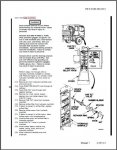Crazyls2
Active member
- 70
- 166
- 33
- Location
- Charleston SC
I promise I tried to figure this out using the TM's and I looked through the forum. I feel like the TM's might as well be written in Greek because I have a hell of a time finding things in them. I was able to use them for the fan clutch and a few other things but it takes me 3 days to get to the section I need most times.
A few weeks ago my truck started seeping oil from the cab lock cylinder. Recently while trying to raise the cab so I could try attacking my oil leak it shot out all the hydraulic fluid. I ordered a rebuild kit and rebuilt the cylinder but now I can't seem to get the air out of the lines so the cab lift isn't working. How do I bleed that system? I refilled it with AW-32 ( as I recall) because I had found a few people on here saying it was a suitable substitute for the MIL spec fluid in the truck. Any help would be greatly appreciated.
A few weeks ago my truck started seeping oil from the cab lock cylinder. Recently while trying to raise the cab so I could try attacking my oil leak it shot out all the hydraulic fluid. I ordered a rebuild kit and rebuilt the cylinder but now I can't seem to get the air out of the lines so the cab lift isn't working. How do I bleed that system? I refilled it with AW-32 ( as I recall) because I had found a few people on here saying it was a suitable substitute for the MIL spec fluid in the truck. Any help would be greatly appreciated.




